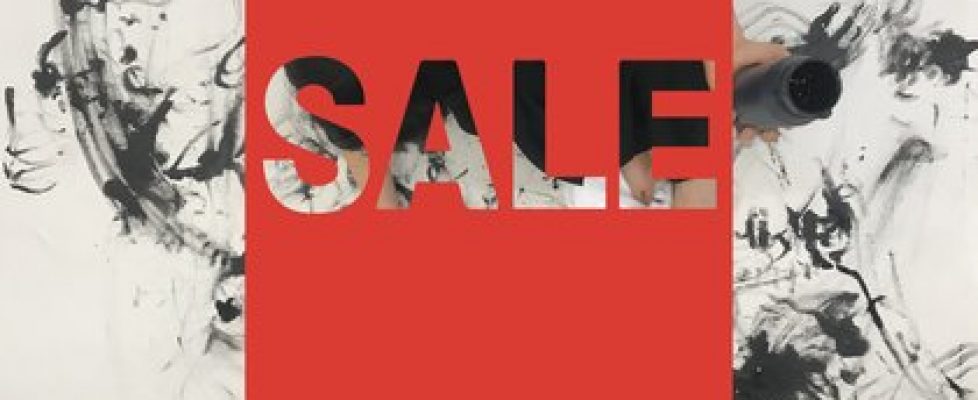Tate Exchange 2020
Sale (now ended) – Print cash, buy art and explore the market in a new independent economic state
The gap between the rich and everyone else is widening. Wages have stagnated for all except the top 5% and the owners of capital. Art reflects these trends. A few artists have become immensely wealthy, turning themselves into well-known brands. Many more artists scratch a living and support their practise by working on zero-hours contracts.
At Tate Exchange 2020, Central Saint Martins proposed to consider these problems by creating an independent economic state on the fifth floor of the Blavatnik Building in which visitors could make and spend billions.
Students and staff from the Art programme at Central Saint Martins had products to sell. Over the course of the week more than 300 closing down sales gave visitors the opportunity to buy, buy, buy. Only our currency was accepted and the only way to earn this was in our mint, where visitors were able to design and print their own stash of cash and – time allowing – make as much money as they needed. Newly minted, they were able to buy artworks across a range of media made specially for the event. Prices increased with demand but with the means of currency production at your fingertips you never ran out of money…
Following are some of the contributions that MA Art and Science students made to Sale:

DIRTY MONEY
Molly Mccleod invited members of the public to play with my interactive sound board, where coins were the sound triggers. Each coin triggered a mini soundscape made using sounds created only with the coins themselves.
I will now be culturing the bacteria from the coins and growing it in the lab as a living record of the participants who visited Tate exchange. A new collaborative piece of artwork will arise from this transfer of bacteria from over 200 people who interacted with the work.
 Above images: Workshop by Molly Mccleod
Above images: Workshop by Molly Mccleod
……………………………………………………………………………………………………….
Visible blind box
 Above image: Cross Lab – Sex Sells
Above image: Cross Lab – Sex Sells
The “SEX SELLS” installation was a one-meter-high dodecahedron made of a
wooden structure, including thirty wooden supporting pillars and twelve acrylic
plate pentagons. Inside the structure is a plinth with a “condom” presented. The
“condom” will be connected to an engine. With the help of Arduino, we
designed a system that can control the movement of the “condom” and its
context through the money paid by visitors.
Watch the TATE EXCHANGE 2020 Videos below:
The “condom” is not only a metaphor for sex but also refers to desire, power, art, and attention, as an underlying symbol in human society. The dodecahedron, as a marketplace (a gallery) demonstrating human desire, will create an effect of infinite reflection which indicates a sense of immoderate lust. Audiences could interact with the installation by paying for their desire. They will “pay” (exchange)
for the experience, addiction, and dopamine. We sell experiences, the “priority” and “tickets” to feel happiness, excitement, and attention.
 Above image: Cross Lab. Title: Sex Sells
Above image: Cross Lab. Title: Sex Sells
 Above image: Team members: Manqiao Fang – MRes Exhibition Studies from CSM. Chuan Qin – Culture Criticism and Curation from CSM. Ke Wang from Interaction Design Communication at LCC. Qinming Feng from Art and Science at CSM and Yang Li from Art and Science at CSM
Above image: Team members: Manqiao Fang – MRes Exhibition Studies from CSM. Chuan Qin – Culture Criticism and Curation from CSM. Ke Wang from Interaction Design Communication at LCC. Qinming Feng from Art and Science at CSM and Yang Li from Art and Science at CSM
Introduction: The commonality of blind box and capsule games is similar to the process of lottery transactions and cannot be predicted. Different rules and instructions make the audience and consumers wonder what they will get. X-rays and CT show this mystery in a relatively bare way. The audience uses screen printing to make their own coins and select artists and works to trade. Will X-ray and CT intervention change their consumption behaviour?
 Above image: Graphics of Molly
Above image: Graphics of Molly
Blind boxes represent uncertainty. The image of the doll in the box cannot be judged by its appearance. After purchasing the box, the consumer can confirm it. In an era of material abundance, young people pay more attention to the spiritual satisfaction brought by objects rather than their practical value.
Blind box satisfied the characteristics of the artwork and gave consumers a belief. As a combination of art and commerce, it has artistic attributes and is sold as a commodity. This not only lowers the threshold for everyone to buy artworks, but also reduces the time and cost for everyone to buy artworks.
 Above image: The visible blind box
Above image: The visible blind box
The commonality of blind box and capsule games is similar to the process of lottery transactions and cannot be predicted. Different rules and instructions make the audience and consumers wonder what they will get. X-rays and CT show this mystery in a relatively bare way. The audience uses screen printing to make their own coins and select artists and works to trade. Will X-ray and CT intervention change their consumption behaviour?
 Above image: Title – Persona Identity and Image
Above image: Title – Persona Identity and Image
 Above image: titled – Not Sure if I Am Using the Right words. Cut section of Molly printed on Perspex
Above image: titled – Not Sure if I Am Using the Right words. Cut section of Molly printed on Perspex
 Above image: Members of the public enjoying the workshop
Above image: Members of the public enjoying the workshop
